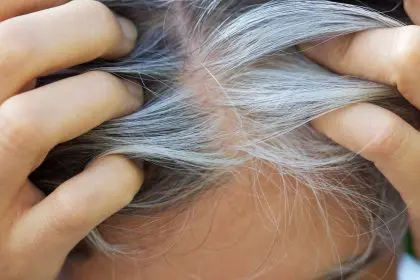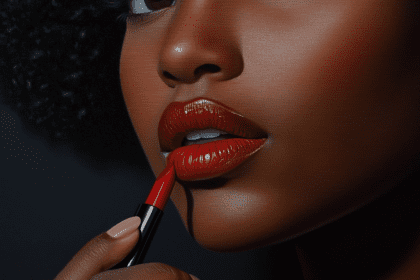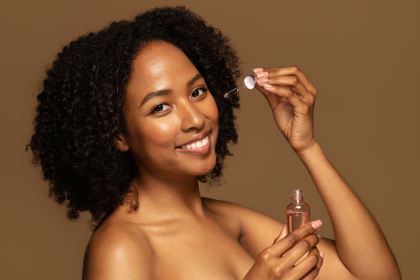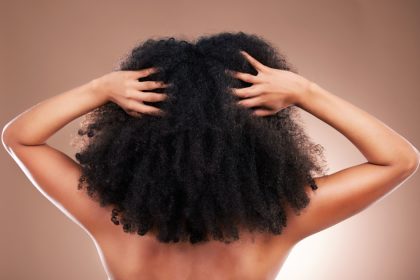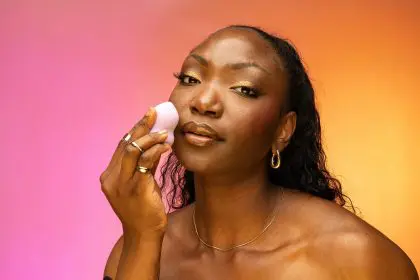Finding extra hair in your brush or shower drain can send anyone into a panic spiral. And in that vulnerable state, you might find yourself falling for all kinds of hair loss “wisdom” that your uncle, neighbor, or that random guy at the gym swears by. Before you know it, you’re standing on your head for blood flow, avoiding hats like the plague, or slathering mayonnaise on your scalp in desperate hope.
The world of hair loss advice is filled with more myths than a Greek epic. Some are harmless but useless, while others might actually make your situation worse. Let’s untangle fact from fiction so you can stop wasting time on remedies that don’t work and focus on approaches that actually might help.
The genetic blame game
The most persistent myth about hair loss is that it’s inherited exclusively from your mother’s side. “Just look at your maternal grandfather’s hair” is advice that’s been passed down through generations, possibly alongside the very genes being discussed.
The truth is more complicated and involves multiple genes from both parents. Male pattern baldness, or androgenetic alopecia, is influenced by genes from both your mother and father. You’re not automatically destined to lose your hair just because your maternal grandfather was bald, nor are you guaranteed a lifelong thick mane if he had one.
Hair loss genetics involves many genes that regulate everything from hormone sensitivity to inflammation responses in your scalp. Some men with strong family histories of baldness never lose their hair, while others with no apparent family pattern can start thinning in their 20s.
What this means practically is that you can’t predict your hair’s future based solely on family photos. And blaming just one side of your family tree won’t help your hair – or your relationship with your mother.
The hat and helmet hysteria
“Wearing hats causes baldness” might be one of the most widespread hair myths out there. The theory usually claims that hats reduce blood flow to the scalp or that they “suffocate” hair follicles.
If hats caused hair loss, we’d see distinctive patterns of balding in populations who wear specific headwear for cultural or religious reasons – but we don’t. The typical male pattern baldness progression follows hormonal patterns, not hat patterns.
Regular hat-wearing doesn’t restrict blood flow enough to damage follicles. Your scalp would feel painful long before circulation was compromised enough to affect hair growth. As for “suffocating” follicles, hair is made of dead cells that don’t need to breathe.
The only way hats might contribute to hair problems is if they’re extremely tight and cause traction alopecia, or if you never wash them and develop scalp infections. Otherwise, wear your favorite cap without worry.
This same logic applies to helmets, too. Cyclists, motorcyclists, and football players don’t show higher rates of baldness that correlate with their headgear. Your receding hairline can’t be blamed on your bike commute or weekend football games.
The shampooing frequency fallacy
Hair washing advice is wildly contradictory. Some claim daily washing strips natural oils and damages hair, while others insist that not washing enough leads to clogged follicles and hair loss.
The reality? Neither extreme is correct. Washing frequency has virtually no impact on genetic hair loss progression. Your hair follicles are making their decisions about growth phases based on hormones, genetics, and health factors – not how often you lather up.
That said, proper scalp hygiene is important for overall hair health. An excessively oily scalp can lead to seborrheic dermatitis, which won’t cause permanent hair loss but can temporarily increase shedding if left untreated.
The best approach is simple – wash your hair when it feels dirty. For some people that’s daily, for others it’s a few times a week. Your optimal frequency depends on your scalp’s oil production, activity level, and hair type. One person’s perfect routine would leave another with either a greasy mess or a dried-out scalp.
And when you do wash, focus the shampoo on your scalp rather than the length of your hair. The goal is to clean the skin where hair grows, not strip the already-grown strands.
The magical mineral mixup
Scrolling through health websites might convince you that your hair loss is due to deficiencies in everything from zinc to selenium to obscure minerals you’ve never heard of. While nutrition absolutely impacts hair health, the supplement industry has exaggerated these connections into a multi-billion dollar business.
The truth is that unless you have a confirmed deficiency, most mineral supplements won’t do anything for genetic hair loss. In fact, some minerals can be harmful in excessive amounts. Too much selenium or vitamin A, for instance, can actually cause hair loss rather than prevent it.
Certain nutrients are genuinely important for hair growth – iron, zinc, biotin, and protein are all building blocks for healthy hair. But the key word is “deficiency.” If you’re not actually low in these nutrients, taking more won’t supercharge your follicles.
Before spending money on expensive hair supplements, consider getting bloodwork done to check for actual deficiencies. Targeted supplementation based on real data is much more likely to help than shotgunning every hair vitamin on the market and hoping something works.
The stress paradox
“Your hair is falling out because you’re stressed about your hair falling out” might sound like a cruel joke, but there’s some truth to the stress-hair loss connection. However, it’s not as straightforward as most people think.
Chronic stress can indeed affect hair growth, primarily through a condition called telogen effluvium, where more hairs than normal enter the shedding phase. But this type of hair loss is usually temporary and differs from pattern baldness.
The myth lies in assuming all hair loss is stress-induced or that managing stress alone will halt genetic balding. While stress reduction is beneficial for overall health and might help with temporary shedding, it won’t stop androgenetic alopecia, which is driven primarily by hormonal factors.
That said, the psychological impact of hair loss can create genuine stress, which forms an unfortunate feedback loop. Working on stress management techniques can improve your mental wellbeing even if they don’t directly reverse hair thinning.
The testosterone confusion
Perhaps no hair loss myth is more concerning to men than the idea that high testosterone causes baldness, with the implied threat to masculinity that creates.
The reality is more nuanced. Male pattern baldness is related to dihydrotestosterone (DHT), a hormone derived from testosterone, but having high or low overall testosterone levels doesn’t directly predict hair loss. What matters more is your hair follicles’ sensitivity to DHT, which is genetically determined.
Some men with excellent hair have high testosterone levels, while some with advanced baldness have lower levels. The key factor is how your particular follicles respond to the DHT present, not your overall hormonal profile.
This is why treatments like finasteride work for many men – they reduce the conversion of testosterone to DHT, protecting susceptible follicles without significantly impacting overall testosterone levels or masculinity.
The bottom line? Balding is not a sign of excessive masculinity, just as keeping your hair isn’t a sign of insufficient testosterone. It’s about genetic sensitivity, not hormone quantity.
The treatment timeline myth
One of the most harmful myths about hair loss treatments is the expectation of immediate, dramatic results. Whether it’s prescription medications like finasteride and minoxidil or more dubious “natural” remedies, many people give up too soon because they don’t see overnight transformation.
The reality of hair biology makes quick results impossible. Hair grows approximately half an inch per month, and the growth cycle takes months to complete. Even the most effective treatments need 3-6 months before you might notice decreased shedding, and 12+ months before visible improvements in thickness or coverage become apparent.
This slow timeline creates the perfect environment for snake oil salesmen to thrive. When legitimate treatments don’t work instantly, people become vulnerable to increasingly exotic and expensive “solutions” that promise faster results.
The truth is that the only treatments with substantial scientific evidence – minoxidil, finasteride, low-level laser therapy, and hair transplantation – all require patience and consistency. Expecting immediate results from any hair loss intervention sets you up for disappointment and wasteful spending.
For those who do commit to evidence-based treatments, understanding the realistic timeline helps maintain the consistency necessary for actual results. The people who see the best outcomes are usually those who can commit to daily treatment for years, not those looking for a quick fix.
Whether you’re just noticing thinning or have been battling hair loss for years, cutting through these myths is the first step toward making informed decisions. Hair loss can be emotionally challenging, and misinformation only adds unnecessary stress and expense to the experience.
The most empowering approach combines realistic expectations with evidence-based treatments, if you choose to treat it at all. And remember – whether you fight hair loss with every available tool or embrace the Bruce Willis look, your value isn’t measured by your hairline. Though if Bruce is reading this, we’re pretty sure even he tried a few remedies before committing to the iconic dome.



